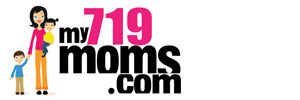According to the Campaign for Safe Cosmetics (CSC), Johnson & Johnson’s Baby Shampoo contains formaldehyde-releasing preservatives. This shampoo is sold in many countries, including the US. However, in other countries they use a formula that does not include these chemicals. For almost two years health and concerned parent groups have called on Johnson & Johnson to stop using formaldehyde in their shampoo. Formaldehyde is a known carcinogen, it seems odd for it to be in the “Purest, Gentlest, & Mildest Care Around.” Of course that is what their website says about their baby products.
The question on everyone’s mind is why are they still making some shampoo with formaldehyde when they have a safer alternative? According to CSC, Johnson & Johnson released a statement saying it is no longer introducing new products with formaldehyde-releasing preservatives and has reduced its use of the chemical by 60 percent in the U.S. market and 33 percent globally over the past few years.
“We know that some consumers are concerned about formaldehyde, which is why we offer many products without formaldehyde releasing preservatives, and are phasing out these types of preservatives in our baby products worldwide,” said the statement.
For the new analysis, entitled Baby’s Tub Is Still Toxic, “The Campaign for Safe Cosmetics purchased and reviewed labels of Johnson’s Baby Shampoo sold in 13 countries to see if the products contained quaternium-15, a chemical preservative that kills bacteria by releasing formaldehyde. The found that Johnson’s Baby Shampoo sold in the United States, Australia, Canada, China and Indonesia contains quaternium-15, while Johnson’s Baby Shampoo formulas sold in Denmark, Finland, Japan, the Netherlands, Norway, South Africa, Sweden and the U.K. contain non-formaldehyde preservatives.”
Why is quaternium-15 so bad? According to the “Baby’s Tub is Still Toxic” report:
Quaternium-15 releases formaldehyde into cosmetics products. Formaldehyde is classified as a known human carcinogen by the U.S. Department of Health and Human Services(ii) and the International Agency for Research on Cancer. The National Cancer Institute, the World Health Organization and the National Toxicology Program have all identified a possible link between formaldehyde exposure and leukemia.(iii,iv,v)
Formaldehyde and quaternium-15 are also potent allergens that can trigger rashes and other skin inflammation problems.(vi) The North American Contact Dermatitis Group considers quaternium-15 to be among the most clinically significant contact allergens in children.(vii)
Do you use Johnson & Johnson products? Did you know there was formaldehyde in their shampoo? What products do you use for your children?




